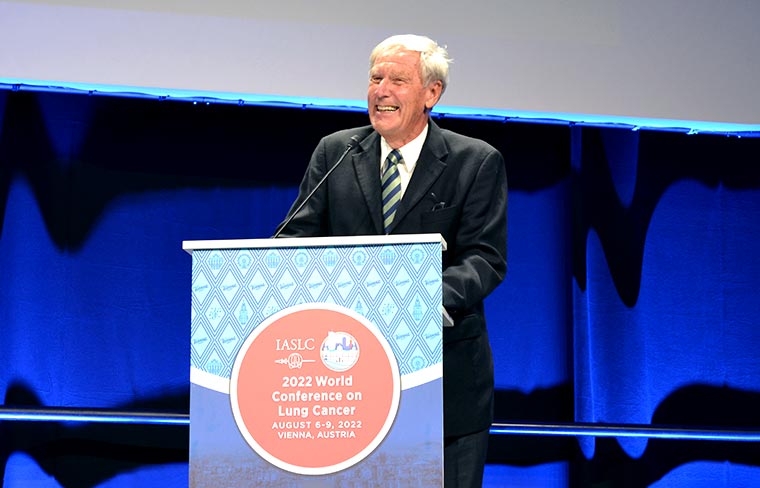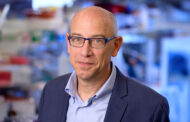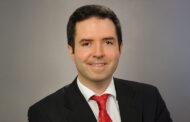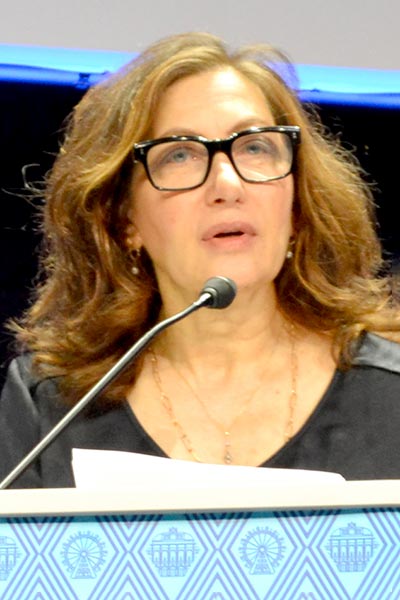
Early clinical data reviewed during the WCLC 2022 Opening Plenary session on Saturday, August 6, suggest that messenger RNA (mRNA) vaccines could transform the treatment of lung cancer and other malignancies. Just as mRNA vaccines have altered the trajectory of COVID-19 worldwide, similar platforms have promise to dramatically change cancer treatment using both off-the-shelf and personalized vaccines.
“mRNA is a transformative agent that is applicable to any type of cancer,” said Christoph Huber, MD, FMH, FECTS, Chair Emeritus of Hematology and Oncology, Johannes-Gutenberg University Mainz, Mainz, German, and co-founder of BioNTech. “It is well-tolerated and can satisfy our still-unmet medical needs. It is early yet, but we are absolutely sure mRNA carries hope to save lives from lung cancer.”
Dr. Huber reviewed the history of mRNA vaccine research from the 1990s to current clinical trials.
mRNA vaccines manufactured by BioNTech, Moderna, and others offer similar advantages, including selective targeting and uptake by antigen presenting cells, the inability to integrate into cellular DNA, high effectiveness without the use of adjuvants, reliable manufacturing, and proven efficacy in both clinical trials and real-world experience.
Two strategies dominate. One strategy targets multiple antigens specific to certain tumor types. Early trials in immune checkpoint resistant melanoma show about a 30% response rate with some very durable effects.
The second approach targets tumor-specific neoantigens that are unique to each patient, Dr. Huber said. Preliminary results from trials in advanced melanoma have seen prevention of relapse for more that 2 years. A phase I trial in colorectal cancer using circulating tumor DNA as a biomarker is in progress.
A proof-of-concept trial combining mRNA cancer vaccines with CAR (chimeric antigen receptor) T-cell therapy has also shown very good clinical effect. The trial uses CLDN6 (claudin-6) advanced tumors. This carcinoembryogenic protein, which is highly expressed in fetal tissue, is important in the development of barriers like skin and lung epithelium. It’s normally silenced early in life, but it can appear in tumors in multiple tissues if it gets activated later.
“We see response, even complete remission,” Dr. Huber said. “There is almost no cytokine release syndrome.”
Researchers are developing the vaccine/CAR T-cell approach as a containerized robotic production system. The goal, Dr. Huber said, is to create a tightly controlled, decentralized manufacturing system that can be distributed and used across multiple treatment centers to better meet patient needs.
Immune checkpoint inhibitors have changed the face of cancer therapy and are also poised for similar advances, but biomarkers beyond PD-L1 remain elusive.
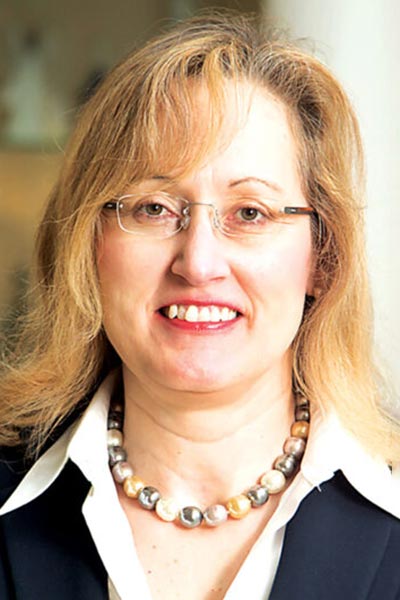
“PD-L1 checkpoint blockade helped transform immunotherapy resistant cancer to immuno responsive disease,” said Julie Brahmer, MD, Marilyn Meyerhoff Professor and Director of Thoracic Oncology, Sidney Kimmel Comprehensive Cancer Center, Johns Hopkins University. “Now we need to harness the mechanisms of immune resistance.”
The 2021 approval of nivolumab plus chemotherapy for neoadjuvant use in addition to several front-line combination and single agent regimens opened the door to an array of therapeutic choices as well as many questions, she added. Multiple clinical trials are exploring different therapeutic sequences, different therapeutic combinations, and different durations of treatment. WCLC attendees can expect to see new clinical data during the next few days.
New approaches to subtyping PD-L1 based on the tumor immune microenvironment using T-cell infiltration and PD-L1 expression may help explain different immune escape mechanisms. About half of non-small cell lung cancers lack infiltrating T cells and are less likely to respond to checkpoint blockade, suggesting that alternating strategies such as CAR T therapies or bispecific agents may be beneficial.
“Immune checkpoint inhibitors have changed therapy to the point that even in advanced disease, the word ‘cure’ is being used,” Dr. Brahmer said. “But we have only scratched the surface in the way the immune system works. We need to better define biomarkers of response and resistance to make precision immunotherapy a reality. We also need to harness the mechanisms of resistance to further improve survival for our patients.”
Advances in treatment can’t come too quickly for patients. Lung cancer leaves patients, their families, and their caregivers physically, emotionally, and financially vulnerable, said Lung Cancer Foundation spokesperson and actor Annabelle Gurwitch, who is living with stage IV NSCLC.
“I had what, to me, was an unremarkable cough in the spring of 2020,” Ms. Gurwitch said. “When the doctor at an urgent care clinic suggested an x-ray, I thought he was trying for an upsell. What I got was a phone call to tell me I had a mass on my lungs.”
Two years later, biomarker-targeted therapy is working, but the journey has not been smooth.
“I was on a Zoom with a physician I had never met during a COVID lockdown,” Ms. Gurwitch recalled. “Biomarker testing could help, but my insurance didn’t cover the cost. And while I was prepared to pay for testing, an academic center stepped in. But the contacts, the negotiations, the arrangements, took hours on the phone and days of my life. Too many people don’t have the luxury of time to be their own advocates. Too many physicians don’t even mention biomarkers if their patients lack insurance that might cover it.”
A successful author with four comedy titles on bookstore shelves, she fell behind on a fifth title.
“Writing is a confidence game and mine was shattered,” Ms. Gurwitch said. “I couldn’t complete a sentence or a coherent thought. I couldn’t trust myself.” When she finally told her editor and agent about her cancer diagnosis, both stepped in to help. That fifth book, You’re Leaving When? landed on the New York Times list of favorite reads for healthy living.
Ms. Gurwitch also struggled with side effects and stigma.
“It was months before I could tell my doctor I couldn’t tolerate my drug,” she said. “I am happy to say I can tolerate a lower dose. When lung cancer survival rates are better, maybe people will feel empowered to speak out. My dermatologist, dentist, and gynecologist all asked me how long I had smoked. Their simple question speaks to our lack of knowledge that 30% of NSCLC occurs in nonsmokers.
“I am coming up on the two-year mark and my clock is ticking,” Ms. Gurwitch said. “I would like to retire the terms cancer patient and cancer advocate from my to-do list. I am hoping that all of you here will help me achieve that goal.”


